I/O流
- 什么事文件
文件就是保存数据的地方
- 文件流
文件在程序中是以流的方式来操作的

流: 数据在数据源(文件) 和 程序(内存之间)经历的路径
输入流 : 数据从数据源(文件) 到程序(内存)的路径
输出流 : 数据从程序(内存) 到数据源文件的路径
1. 常用创建文件的操作
- 创建文件对象相关的构造器的方法
new File(String pathName) // 根据路径构建一个 file 对象
new File(File parent, String child) // 根据 父目录文件 + 子路径构建
new File(String Parent, String Child) // 根据 父目录 + 子路径构建
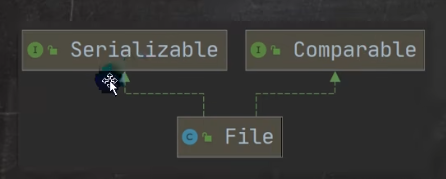
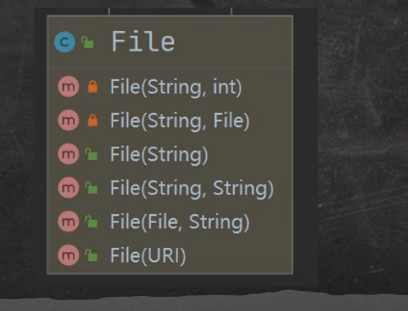
package com.wxledu.file_;
import org.junit.Test;
import java.io.File;
/**
* @author XXX
* @version 1.0
*/
public class Directory_ {
public static void main(String[] args) {
}
@Test
public void m1(){
String filePath = "d:\\news02";
File file = new File(filePath);
if (file.exists()){
if (file.delete()){
System.out.println(filePath + "删除成功");
} else {
System.out.println(filePath + "删除失败");
}
} else {
System.out.println("该文件不存在");
}
}
// 判断 D:\\demo02 是否存在,存在就删除,否则就提示不存在
// 我们这里需要体会到,在java 编程中,目录也可以当做文件
@Test
public void m2(){
String filePath = "D:\\demo02";
File file = new File(filePath);
if (file.exists()){
if (file.delete()){
System.out.println(filePath + "删除成功");
} else {
System.out.println(filePath + "删除失败");
}
} else {
System.out.println(filePath + "目录不存在");
}
}
// 判断 D:\\demo\\a\\b\\c 目录是否存在,如果存在就提示存在,不存在就创建
// 创建一级目录 mkdir() 创建多级目录 mkdirs()
@Test
public void m3(){
String directoryPath = "D:\\demo\\a\\b\\c";
File file = new File(directoryPath);
if (file.exists()){
System.out.println(directoryPath + "目录存在");
} else {
if (file.mkdirs()){
System.out.println(directoryPath + " 该目录创建成功");
} else {
System.out.println(directoryPath + "创建失败");
}
}
}
}
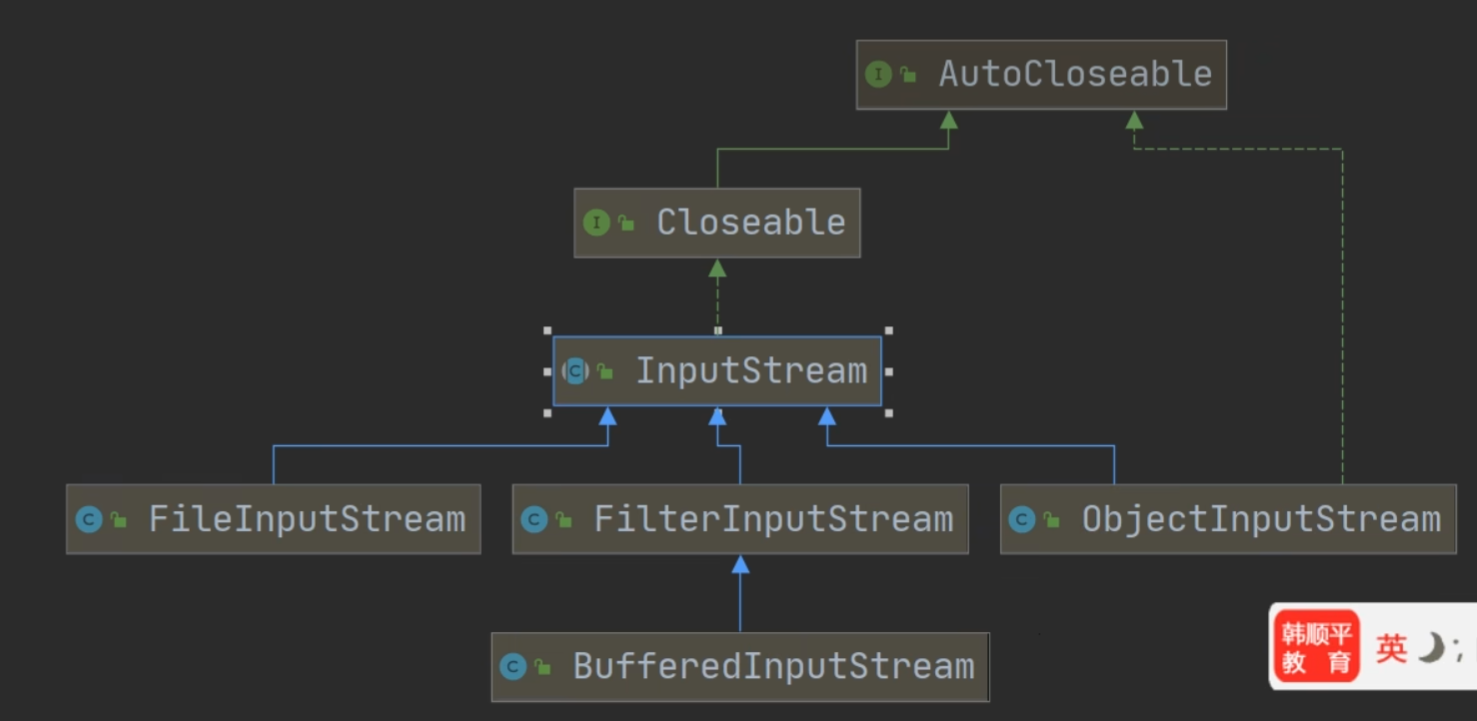
2. InputeStream 字节输入流
InputStream 常用子类
FileInputeStream文件输入流BufferedInputStream缓冲字节输入流ObjectInputStream对象字节输入流
package com.wxledu.outputStream_;
import org.junit.Test;
import java.io.FileOutputStream;
import java.io.IOException;
/**
* @author xxx
* @version 1.0
*/
public class OutputStream01 {
public static void main(String[] args) {
}
/**
* 演示使用 FileOutputStream 写入文件中
* 如果文件不存在,就创建文件
*/
@Test
public void writeFile(){
String filePath = "D:\\a.txt";
// 创建 FileOutputStream 对象
FileOutputStream fileOutputStream = null;
try {
// 得到 fileOutPutStream 对象
// 1. new FileOutputStream(filePath) 创建方式,写入的内容是,会覆盖原来的内容
// 2. new FileOutPutStream(filePath, true) 创建方式,写入的内容是,追加到文件的后面
fileOutputStream = new FileOutputStream(filePath, true);
// char - > int
// 写入一个字节
// fileOutputStream.write('H');
// 写入一个字符串
// str.getBytes() 可以把字符串 - > 字节数组
String str = "hello,world!";
// fileOutputStream.write(str.getBytes());
/*
write(byte[] b, int off, int len)
将 len字节从位于偏移量 off的指定字节数组写入此文件输出流。
*/
fileOutputStream.write(str.getBytes(), 0, str.length());
} catch (IOException e) {
e.printStackTrace();
} finally {
try {
fileOutputStream.close();
} catch (IOException e) {
e.printStackTrace();
}
}
}
}
3. I/O 流体系图-常用类
FileReader FileWriter 介绍
FileReader
new FileReader(file/String)- read: 每次读取单个字符,返回该字符,如果到文件末尾返回 -1
- read(char[]) : 批量读取多个字符到数组,返回读取到的字符数,如果到文件末尾返回 -1
相关 API
1)new String(char[]) 将 char[] 转换成 String
2)new String(char[], off, len): 将 char[] 的指定部分转换成 String
FileWriter
- new FileWriter(File / String) : 覆盖模式, 相当于流的指针在首端
- new FileWriter(File / String, true) 追加模式,相当于流的指针在行尾
- write(int) : 写入单个字符
- write(char[]) 写入指定数组
- write(char[], off, len) : 写入数组的指定部分
- write(String) 写入整个字符串
- write(string, off, len) 写入字符串的指定部分
相关 API
String 类 toCharArray : 将 String 转换成 char[]
注意: FileWriter 使用后, 必须要关闭 close 或 刷新 flush 否则写入不到指定文件
4. 节点流和处理流
节点流:节点流可以从一个特定的数据源读写数据,如 FileReader FileWriter
数据源就是存放数据的地方

处理流(也叫包装流) 是 “连接” 在已存在的流(节点流或处理流) 之上, 为程序提供更为强大的读写功能, 如 BufferedReader BufferedWriter 对节点流进行包装让我们这个流更强大

BufferedReader 类中有属性 Reader , 即可以封装一个节点流 该节点流可以是任意的

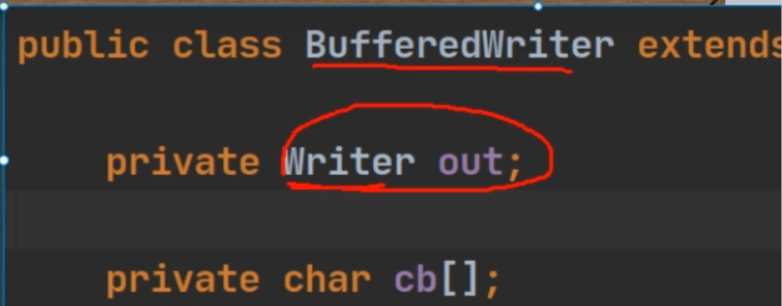
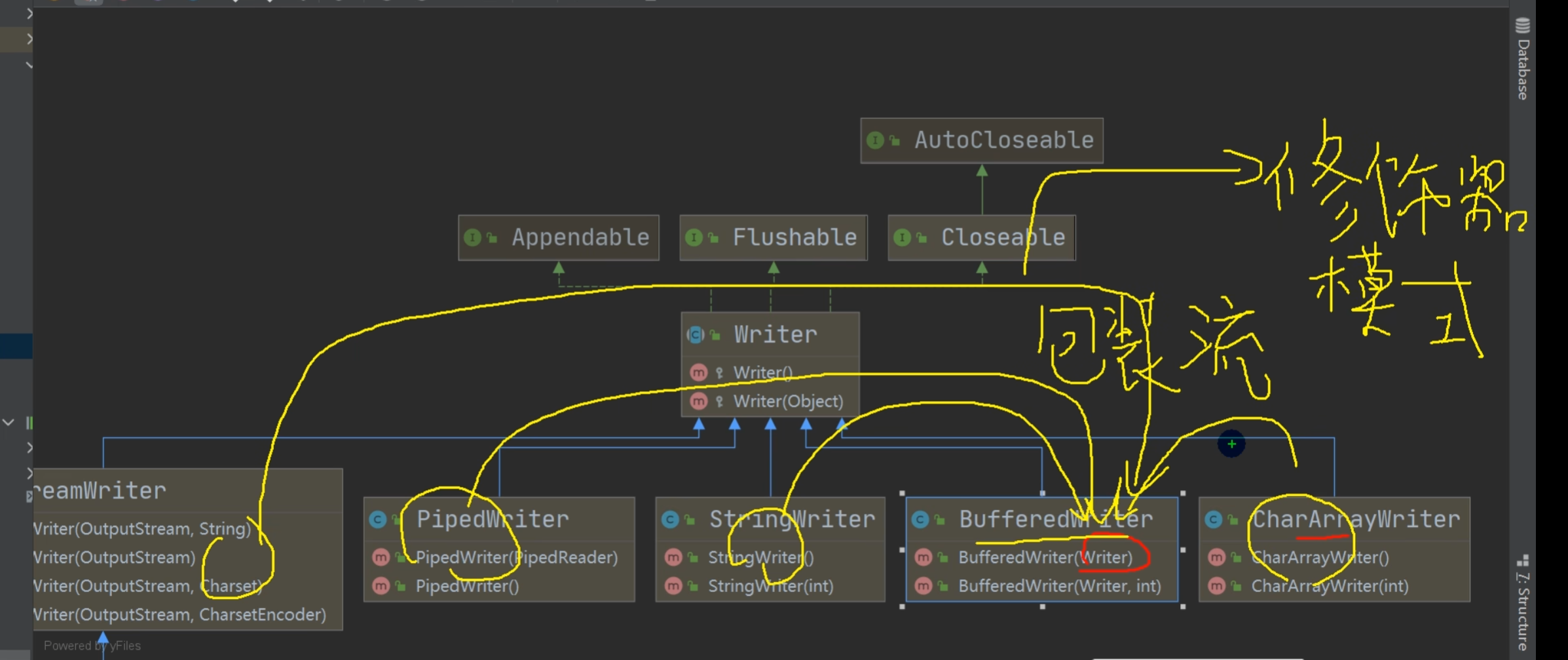
4.1 节点流和处理流的区别于联系
- 节点流是 底层流 / 低级流, 直接跟数据源相连
- 处理流包装节点流,既可以消除不同节点流之间的额差异,也可以提供更方便的方法来完成输入输出[源码理解]
- 处理流(也叫包装流)对节点流进行包装,使用了修饰设计器设计模式,不会直接与数据源相连
4.2 处理流的功能主要体现在以下两方面
- 性能的提高 : 主要以增加缓冲的方式来提高输入输出效率
- 操作的便捷: 处理流可能提供了一系列便捷的方法来一次输入输出大批量的数据,使用更加灵活
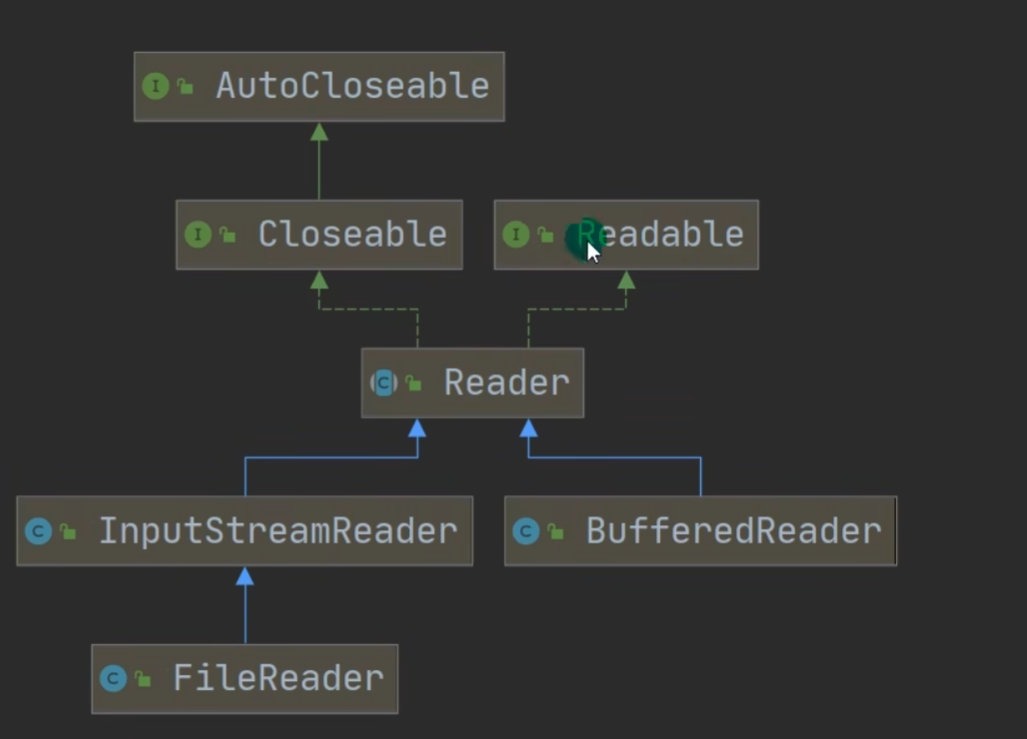
5. 序列化 和 反序列化
-
序列化就是在保存数据时,保存数据的值和数据类型
-
反序列化就是在恢复数据时,恢复数据的值和数据类型
-
需要让某个对象支持序列化机制,则必须让其他类是可序列化的,为了让某个类是可序列化的,该类还必须实现如下两个接口之一:
Serializable这是一个标记接口Externlizable该接口有方法需要实现,一般实现上面的
细节
- 读写顺序一致
- 要求实现序列化和反序列化的对象,需要实现 Serializable
- 序列化的类中建议添加 SerialVersionUID 为提高版本的兼容性
- 序列化对象时,默认将里面的所有属性都进行序列化,但除了 static 或 transient 修饰的成员
- 序列化对象时,要求里面的属性类型也实现序列化接口
- 序列化具备可继承性,也就是如果某类已经实现了序列化,则他的所有子也默认实现序列化
Properties
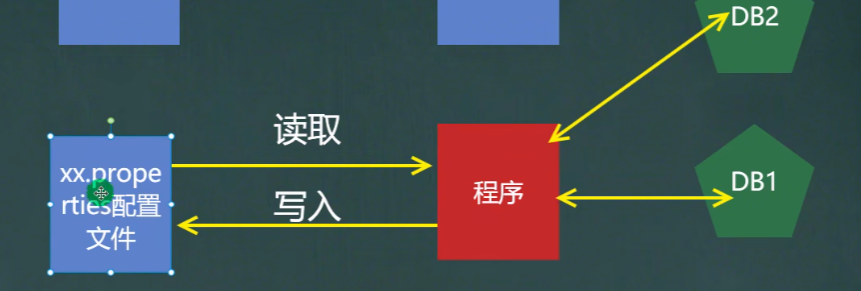
- 专门用来读取配置文件的集合类
配置文件格式
键=值
- 注意:键值对不需要有空格,值不需要用引号引起来,默认类型就是
String
Properties 的常见方法
- load: 加载配置文件到 Properties 对象
- list : 将数据显示在指定设备
getProperty(key)根据键获取值setProperty(key, value)设置键值对到 Properties 对象store将 Properties 中的键值对存储在配置文件,在 idea 中,保存信息到配置文件,如果含有中文,会存储为unicode码
标签:file,java,String,filePath,File,IO,new,序列化 From: https://www.cnblogs.com/tomlove/p/17990629
http://tool.chinaz.com/tools/unicode.aspxunicode 码查询工具